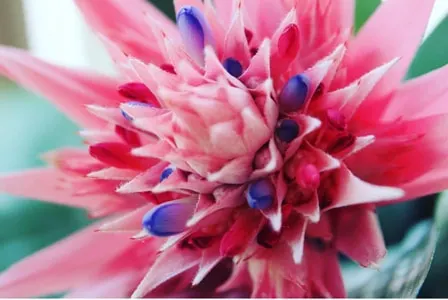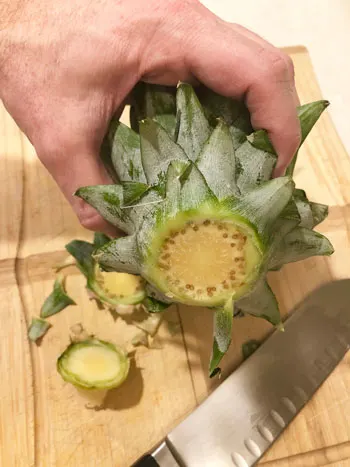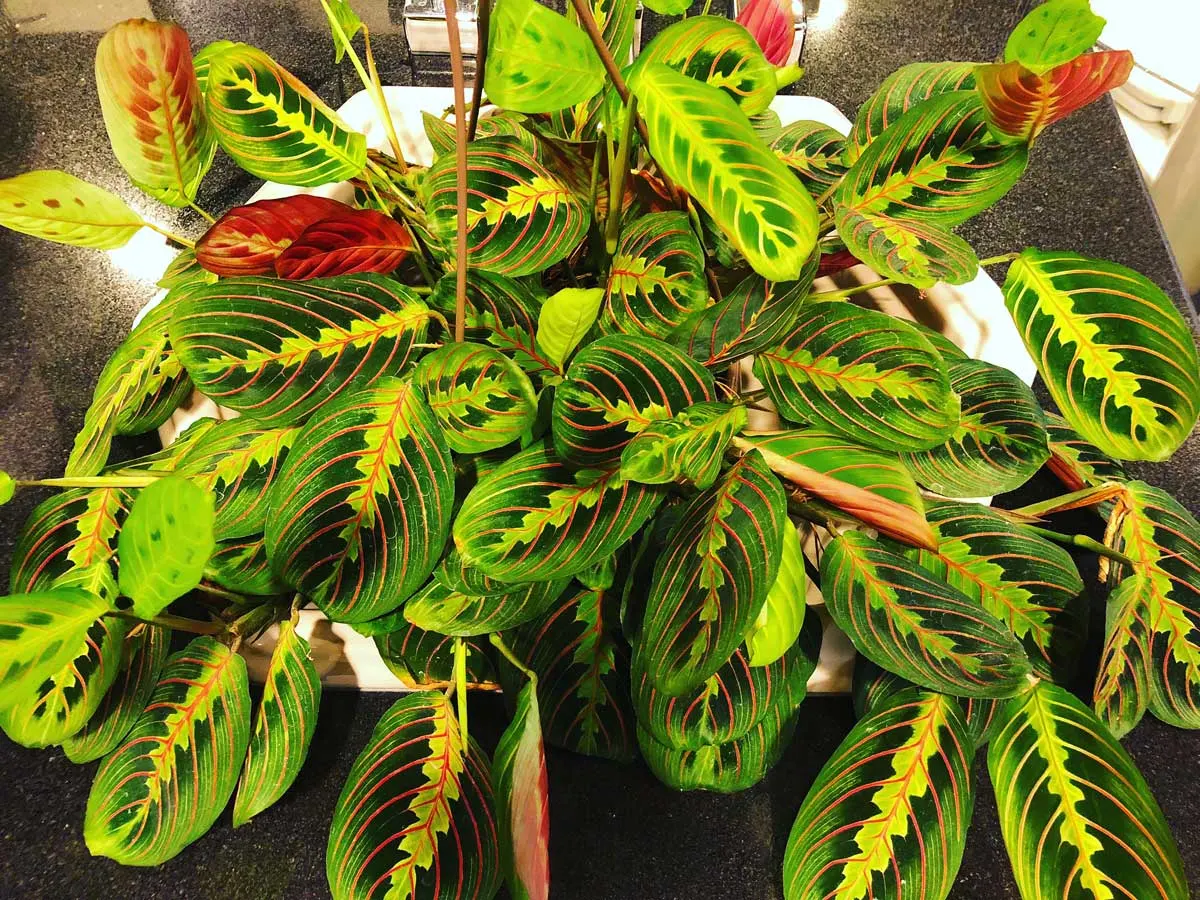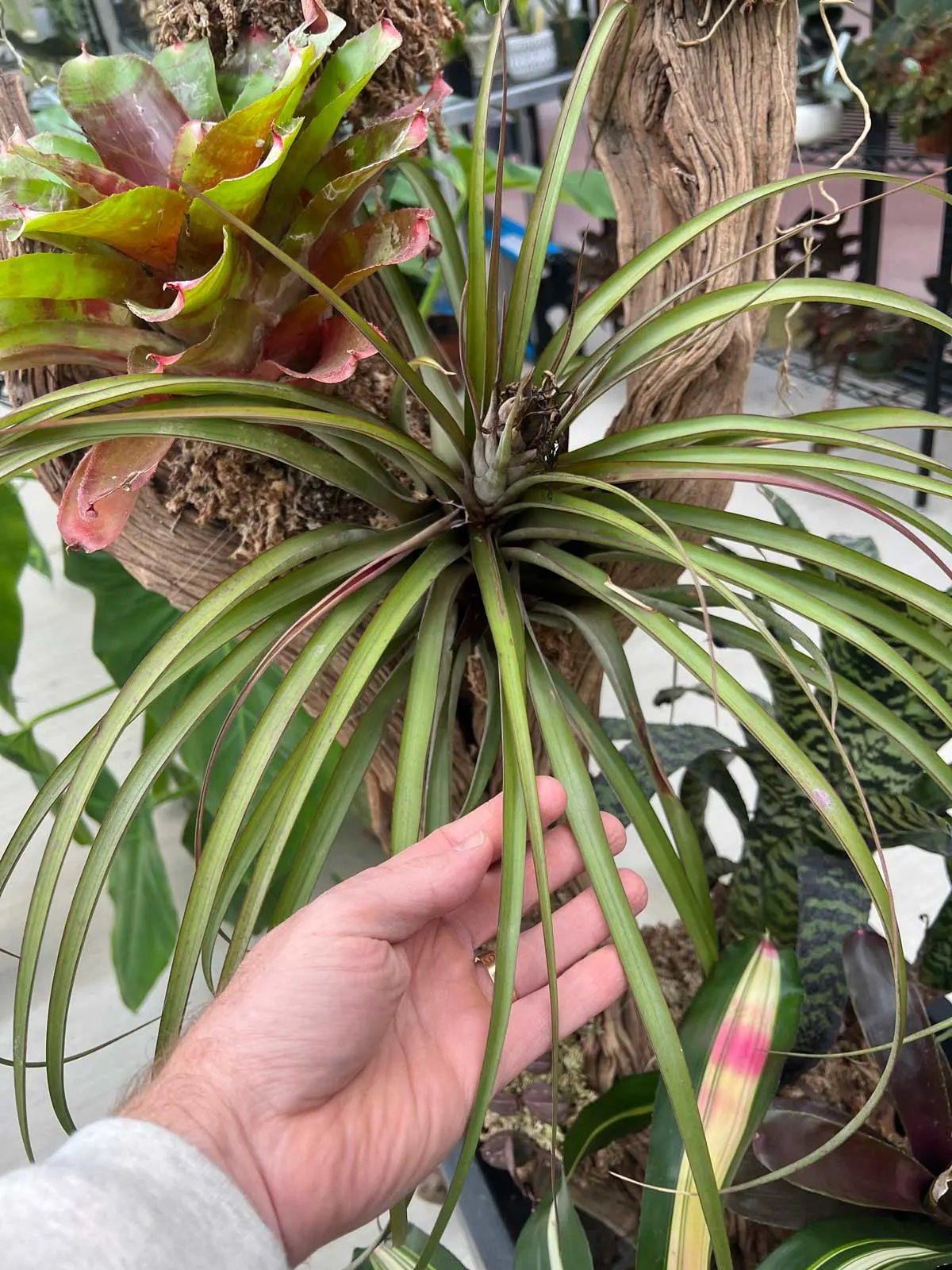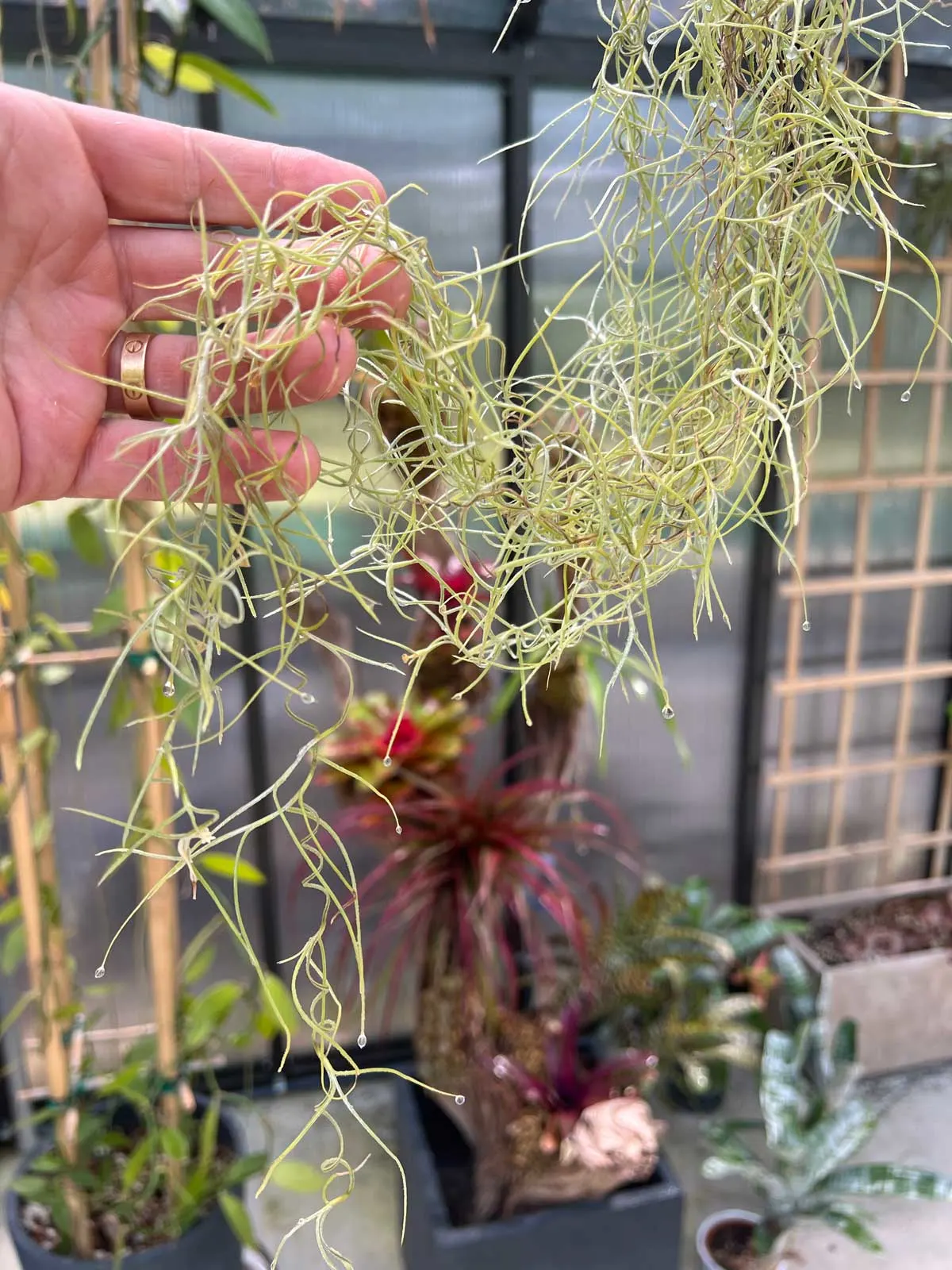Some of the links in this post may be affiliate links.
The bromeliad family contains some of the most beautiful and exotic tropical plants that you can grow indoors. Despite their bold appearance, they’re actually pretty tough and many of them make for great indoor plants. Keep reading to learn all about 19 different ones that you can try growing in your home.
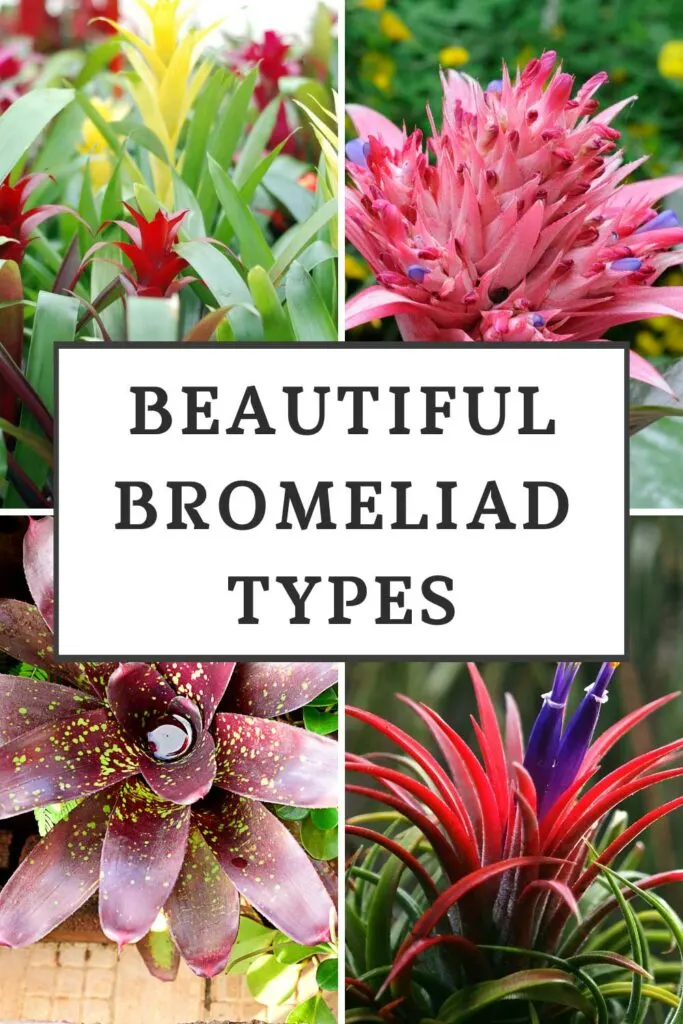
Table of Contents
Table of Contents
WHAT ARE BROMELIADS?
Before I get into the types of bromeliads, here is some useful information that will be helpful in understanding your plants so you can best care for them.
There are currently 72 accepted genera (plural of genus) of bromeliad plants, with each genus containing multiple species, amounting to thousands of different species. This doesn’t count the numerous stunning cultivars.
You may already know and love some bromeliads, but may not have been aware that those plants belong in the Bromeliaceae family. These include air plants, or Tillandsia, and Ananas, the edible pineapple.
Most bromeliads, with the exception of one species that is found in Africa (Pitcairnia feliciana), are native to southern United States, through Mexico, Central America and South America.
Most bromeliads hail from South America, with the greatest number of species found in Brazil.
Bromeliad ecosystems range from tropical rainforests, hot and dry deserts, and even cooler, mountainous regions that get down to freezing.
There are many epiphytic bromeliads (usually growing on tree branches) as well as terrestrial bromeliads that grow in the ground in soil.
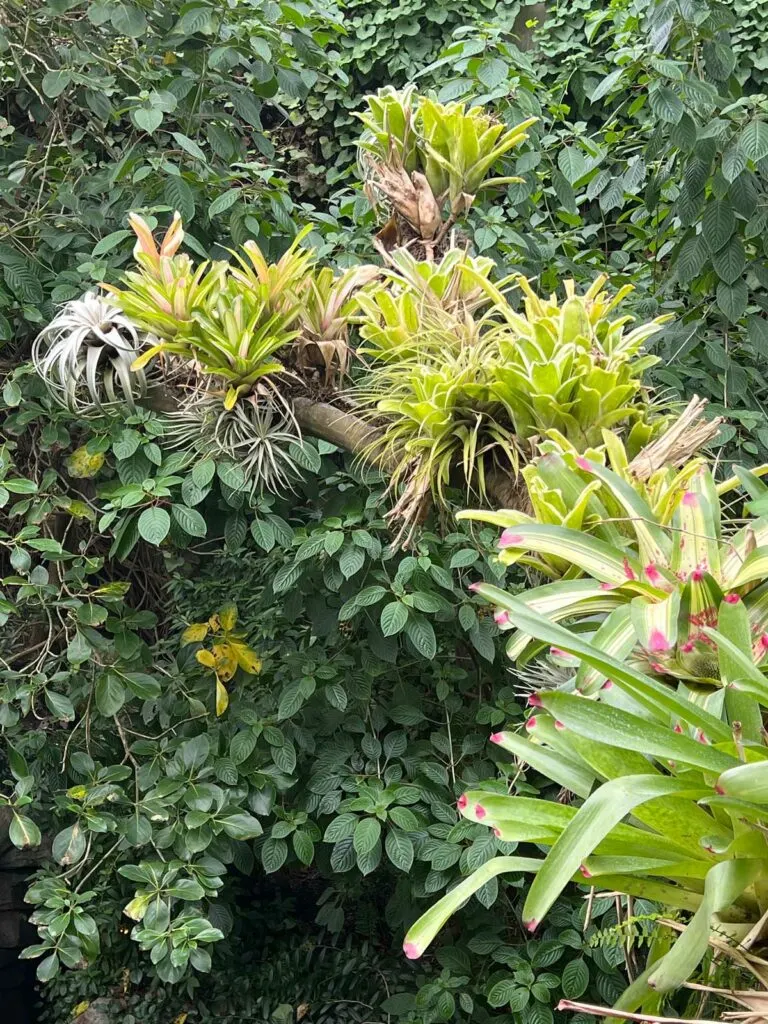
All bromeliads have scale-like structures on their leaves called trichomes which help to absorb water. For species that grow in dry, arid regions, trichomes also help to reduce water loss and help protect the plant against strong solar radiation.
Bromeliads that have a lot of trichomes, usually the ones that grow in hot, dry areas, have so many trichomes that they appear a silvery white. Bromeliads that grow in more humid regions with more rainfall typically have smaller trichomes and appear greener.
Most bromeliads will only flower once, with the flower stalk emerging from the center of the plant. However, the plant will produce new plants called pups at the base of the plant. These pups will be nourished by the mother plant until they can survive on their own.
Eventually the parent plant will die off, but this process will be slow, so don’t be alarmed when this happens!
In general, since many are epiphytes, Bromeliads love to be misted. Not to increase humidity (because misting does not do this, contrary to popular practice), but to help water your plant. You’ll still want to water the substrate too. Many bromeliad have a central cup that holds water and should be filled with water at all times.
If you can, avoid tap water and use purified, rain, or distilled water for best results, though many bromeliads will be forgiving. This is particularly important for tank bromeliads that hold water in their central rosette. It will prevent mineral buildup.
Bromeliad plants also have a small root system, so be careful not to use oversized pots where the potting medium will take too long to dry out. They prefer staying in smaller pots, or to be mounted on a substrate. Mounted plants will need much more frequent watering than potted ones.
Here are 19 different genera of bromeliad, along with some useful tips.
TYPES OF BROMELIADS
1. Aechmea
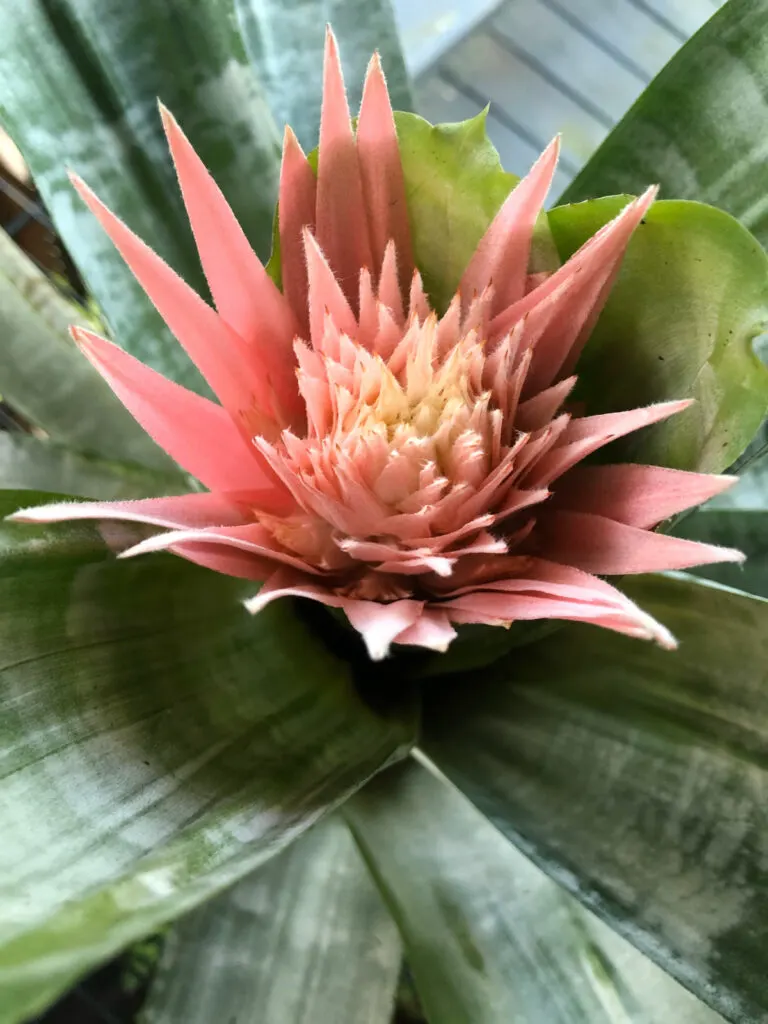
There are about 251 species of Aechmea, with the most popular to grow indoors probably being Aechmea fasciata.
These are considered tank bromeliads, meaning that the leaves form a tight rosette where water can sit in the central cup.
The central cup often is a habitat for small animals. The plant also receives nourishment from decaying leaves, insects, and animal waste that collect in the central cup of water.
Commonly known as urn plant, Aechmea fasciata makes for a wonderful houseplant. Urn plants are native to southeast Brazil.
The flower bract is a gorgeous pink, and the pink and purple flowers emerge from the large bract.
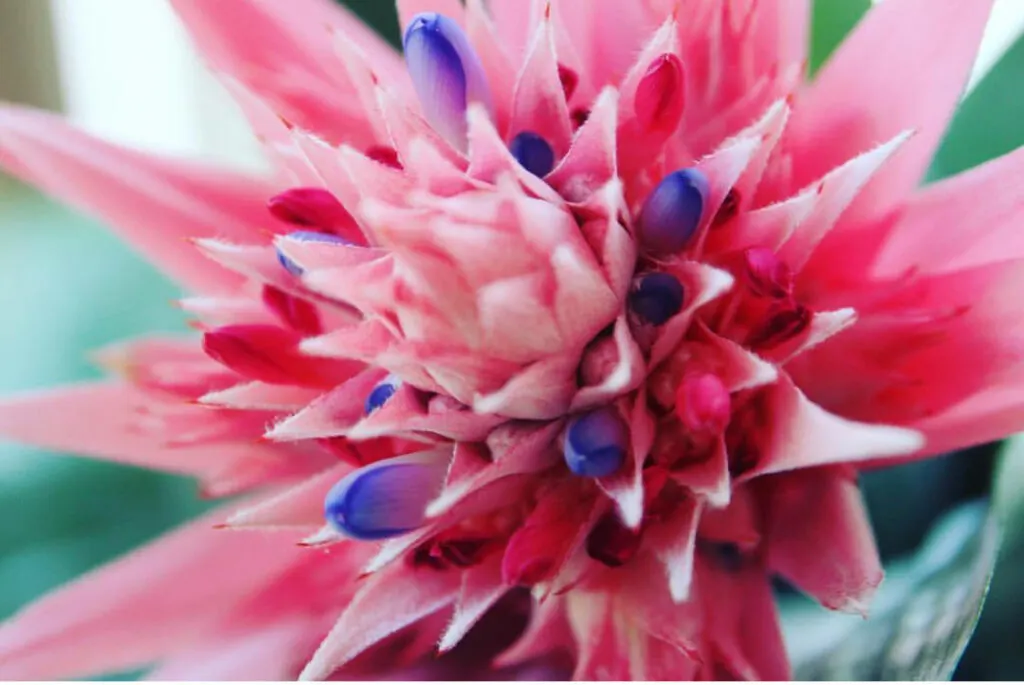
I have had many generations of these plants which have bloomed and produced pups.
These bromeliads need higher light indoors, so give them as much direct sun as you can for best growth, and keep the central cup always filled with water.
Be sure not to miss my detailed growing and propagation guide on Urn Plant.
2. Ananas
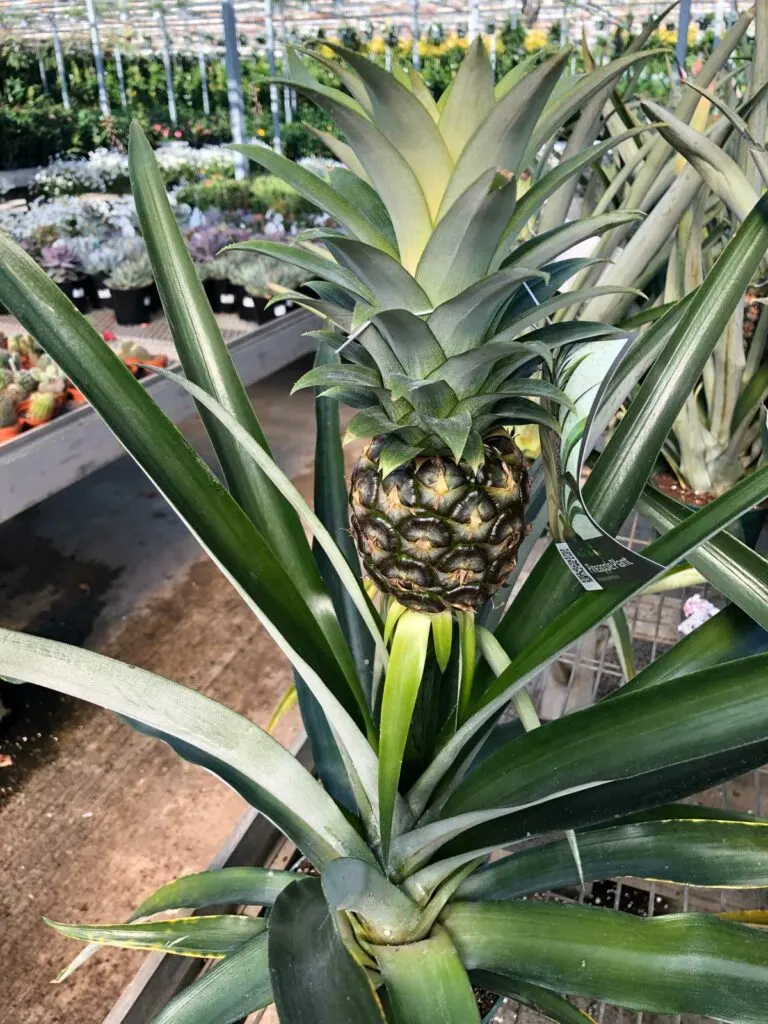
Did you know that the commercial pineapple plant, Ananas comosus, is a bromeliad too?
The pineapple plant is a terrestrial species, meaning that it grows in the ground, versus many other bromeliads that are epiphytic and grow on tree branches.
Native to much of South America, the pineapple plant is easy to grow indoors if you have a window with full sun. Give your pineapple plant as much sun as possible.
It will benefit your pineapple plant to spend warm weather outdoors. They can get 2-3 feet wide, with stiff, sharp foliage.
If you can’t find a pineapple plant for sale, did you know that you can grow your own from a grocery store pineapple top?
Check out my blog post all about how to grow and propagate pineapple plant. It’s easy and fun to do, and I also give you tips on helping your plant to fruit.
3. Billbergia
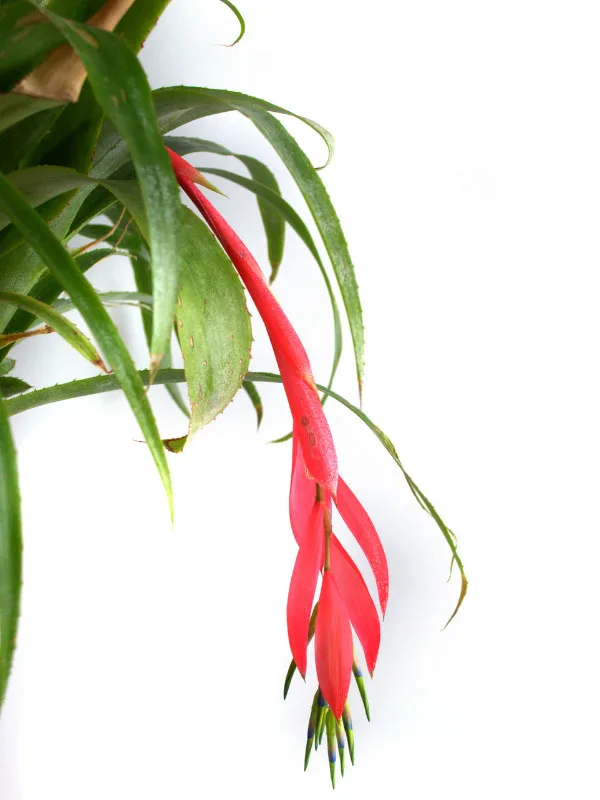
The Billbergia genus contains about 62 accepted species. The leaves have spines on them, and their inflorescences (flowering structure) are usually pendent, dangle off the plant, and are brightly colored.
They’re easy to grow and generally tolerate neglect and dry air pretty well indoors, but increasing humidity is beneficial.
Situate your plant in front of an Eastern or Western window, or any window that get a few hours of direct sun.
4. Canistropsis
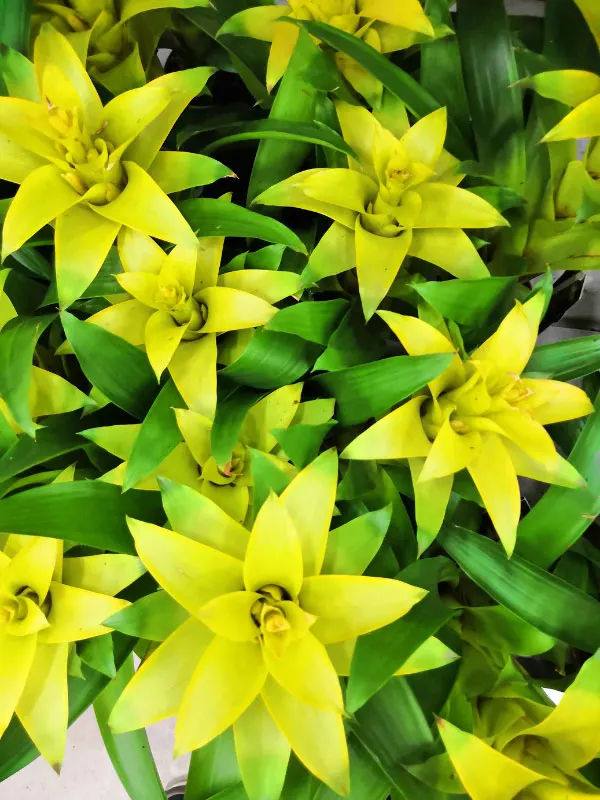
Native to Brazil, the Canistropsis genus contains 10 accepted species. They are easy to grow bromeliads and produce pups readily so you’ll have an endless supply.
They are smaller plants, and the flower bract is beautiful and comes in yellow, orange, red, and pink.
5. Catopsis
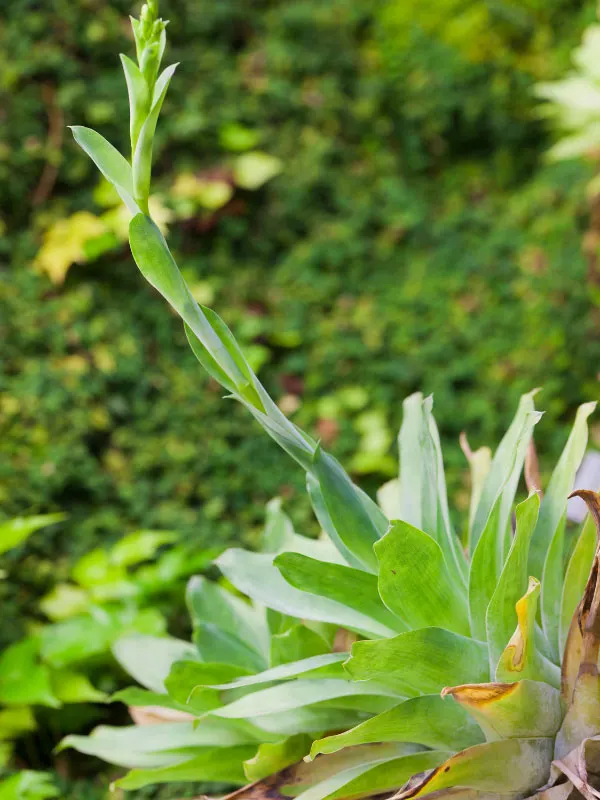
The Catopsis genus contains 21 accepted species, native to much of Mexico, Florida, the Caribbean, Central America and South America.
There is even one species, Catopsis berteroniana, that is carnivorous!
They can be harder to find than some other genera of bromeliads, and are more demanding to grow. This one is not a beginner bromeliad.
In general, Catopsis love high humidity and their light requirement vary depending on the species, with some loving full sun and others preferring shadier positioning.
You probably can’t go wrong with an Eastern or Western facing window. Being epiphytes, mist your Catopsis regularly for best results.
In general, they prefer to grow mounted on a substrate.
6. Cryptanthus
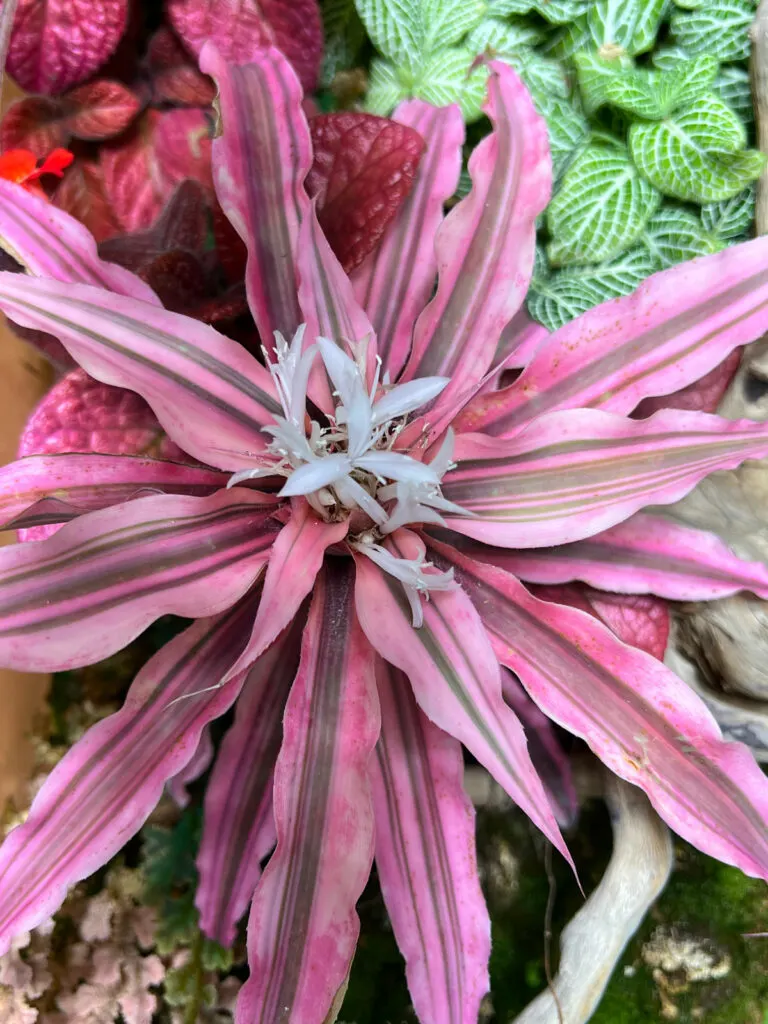
Cryptanthus plants are commonly known as Earth Stars because of their star shape and because they are terrestrial species of bromeliad.
There are 61 accepted species, and these are smaller plants that are popular for use in terrariums because they are moisture-loving.
This plant is primarily grown for its foliage and contains beautiful bands of gray or bronze on top of a pinkish background.
The genus Cryptanthus comes from “cryptos” and “anthos” meaning “hidden flower” since the flowers are small and held closely against the center of the rosette.
The rosette does not hold water like many other bromeliads do.
7. Dyckia
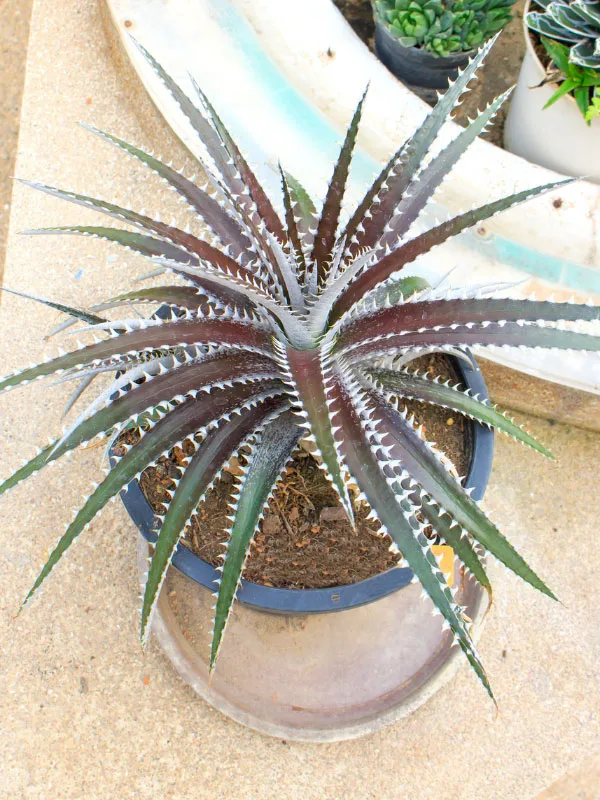
Native to much of South America, the Dyckia genus is terrestrial and contains 181 accepted species, and their rosette do not hold water.
The leaves are succulent and stiff and spiny. Unlike most bromeliads, Dyckia plants sends out spikes with flowers from between the leaves, versus from the center of the plant.
Dyckia bromeliads need full sun for best growth and will tolerate drought very well, though you should water well during the growing season.
Interestingly, after the plant blooms, it will not die after flowering, unlike most bromeliad species.
8. Guzmania
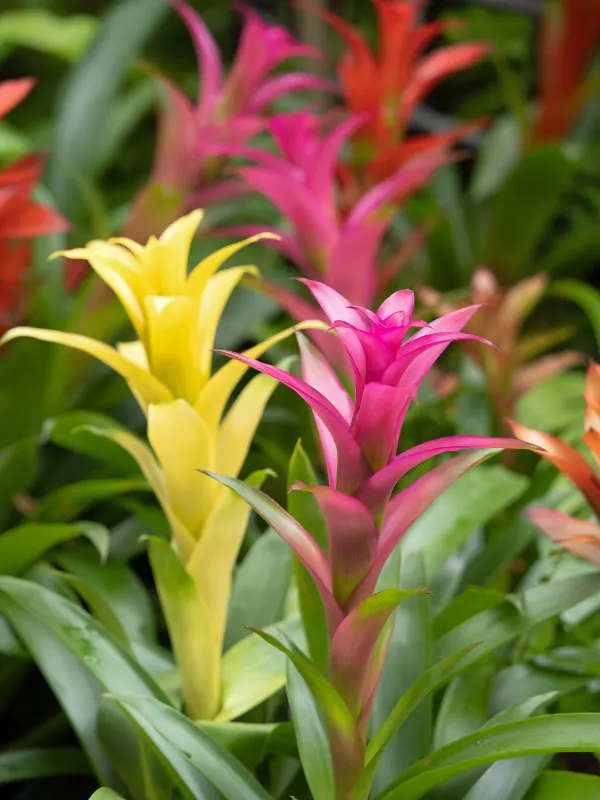
Native to Florida and throughout Tropical America, there are about 208 accepted species of Guzmania.
Most species of Guzmania are tank bromeliads, meaning they hold water in their central cup. The striking inflorescence has brightly colored bracts that come in yellow, green, red, pink, and purple and can last for several months.
These epiphytic bromeliads don’t need very bright light like some others, but a window with a couple hours of direct sun or so is still beneficial.
9. Hechtia
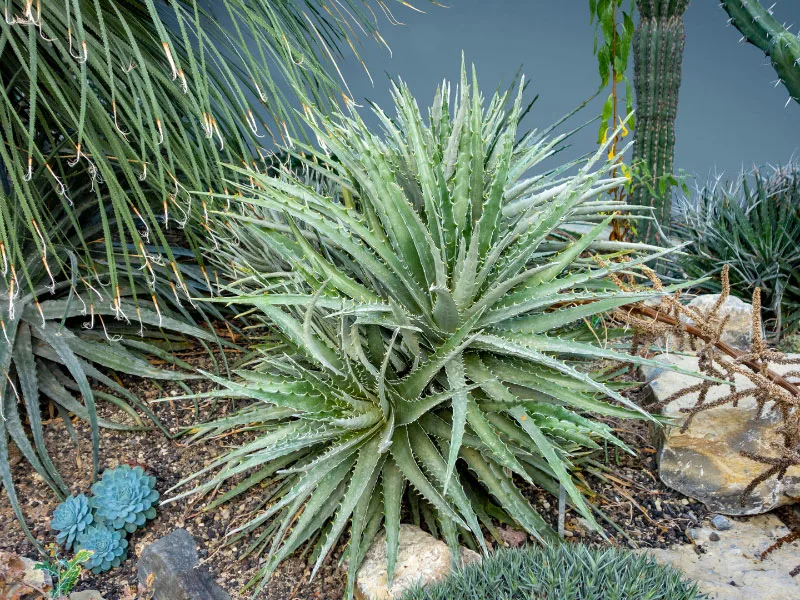
Native to Texas, much of Mexico and parts of Central America, the Hechtia genus contains 87 accepted species.
This is a very high light bromeliad that requires full sun in your home.
Be careful with this plant as many species have sharp spines. Hechtia plants often grow alongside cacti in their natural habitat, and can withstand long periods of drought as well as wild swings in temperature.
These plants are mainly grown for their foliage as their flowers are insignificant.
10. Hohenbergia
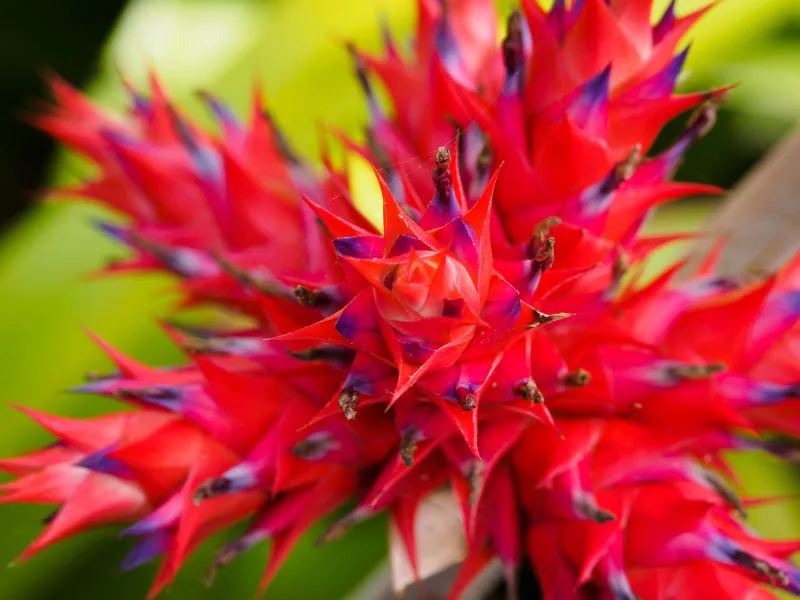
Native to Brazil, Colombia, the South Caribbean and Venezuela, there are 51 accepted species of Hohenbergia.
These plants can be epiphytic but are also found growing terrestrially. Many are native to sandy beaches and prefer full sun, and some other species do best in dappled sun.
Always keep water in their central tank, but rinse it out regularly to avoid stagnation. Rain or distilled water is best.
These can be harder to find unless you purchase from a specialty bromeliad grower. Many species can get quite large, so be aware of their mature size before attempting to grow them.
11. Neoregelia
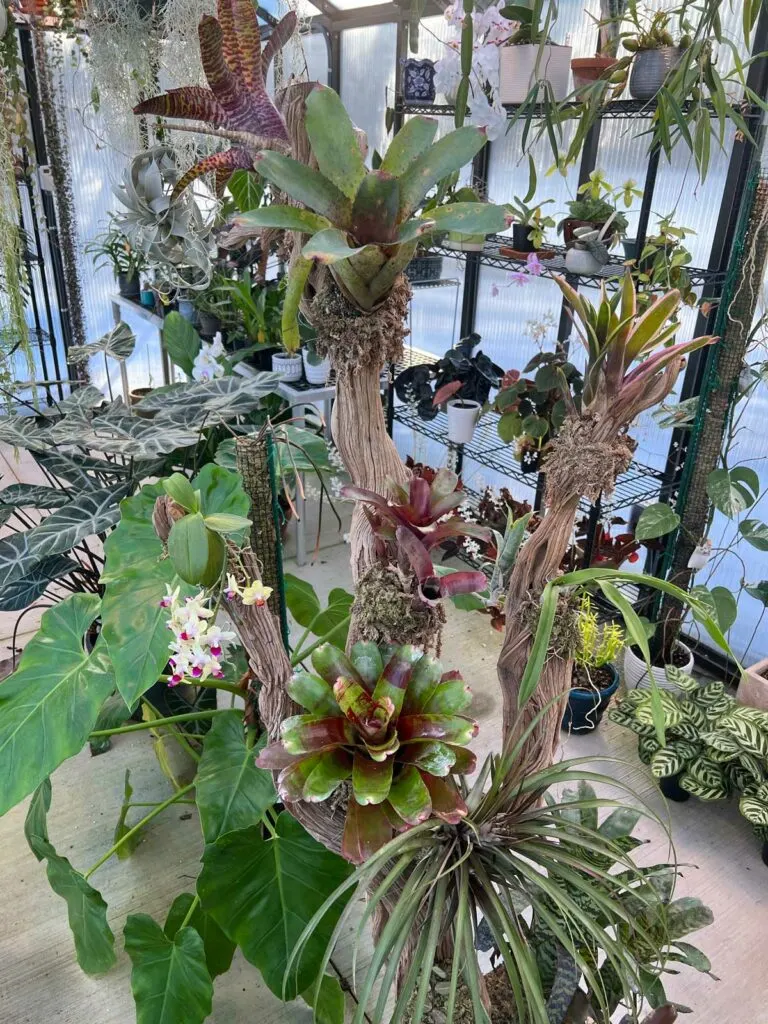
Native to South America, the Neoregelia bromeliad genus contains 116 species. There are many stunning cultivars and they are among the most beautiful bromeliads, and are easier to find than many others.
The leaves form a beautiful rosette and can be green, red, yellow, maroon, as well as with spots or mottled patterns. They do well in pots or mounted.
Neoreglia bromeliads have small flowers that barely rise above the water in the central cup.
The Hawaii Bromeliad Society recommends very light feeding, or even none, especially as the plant approaches maturity.
12. Nidularium
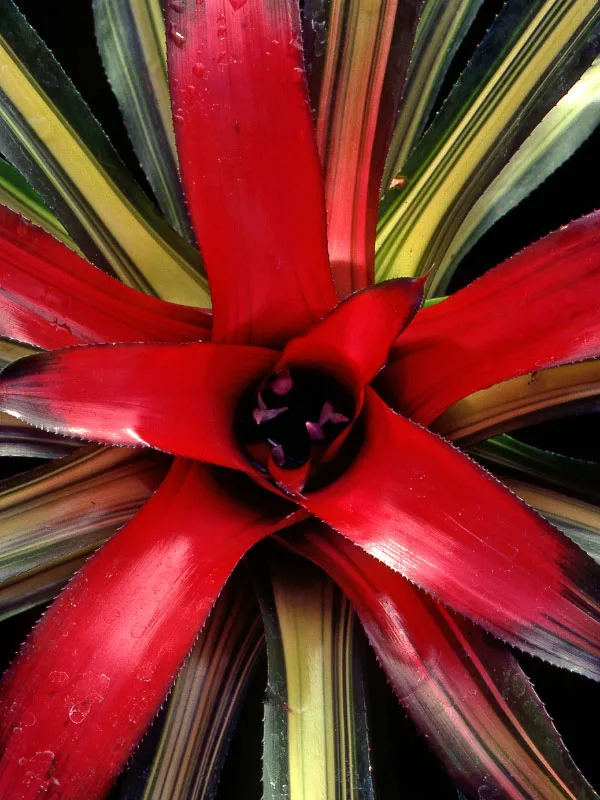
This Brazilian genus contains 46 accepted species. When the plant gets ready to flower, the inner leaves turn a beautiful red color, thus the common name Blushing Bromeliad. The flowers themselves are small and grow right out of the central cup.
The foliage is usually quite shiny and has spines on the leaf edges.
They appreciate high humidity, a substrate that never dries out completely, and a central cup that is always full of water.
13. Orthophytum
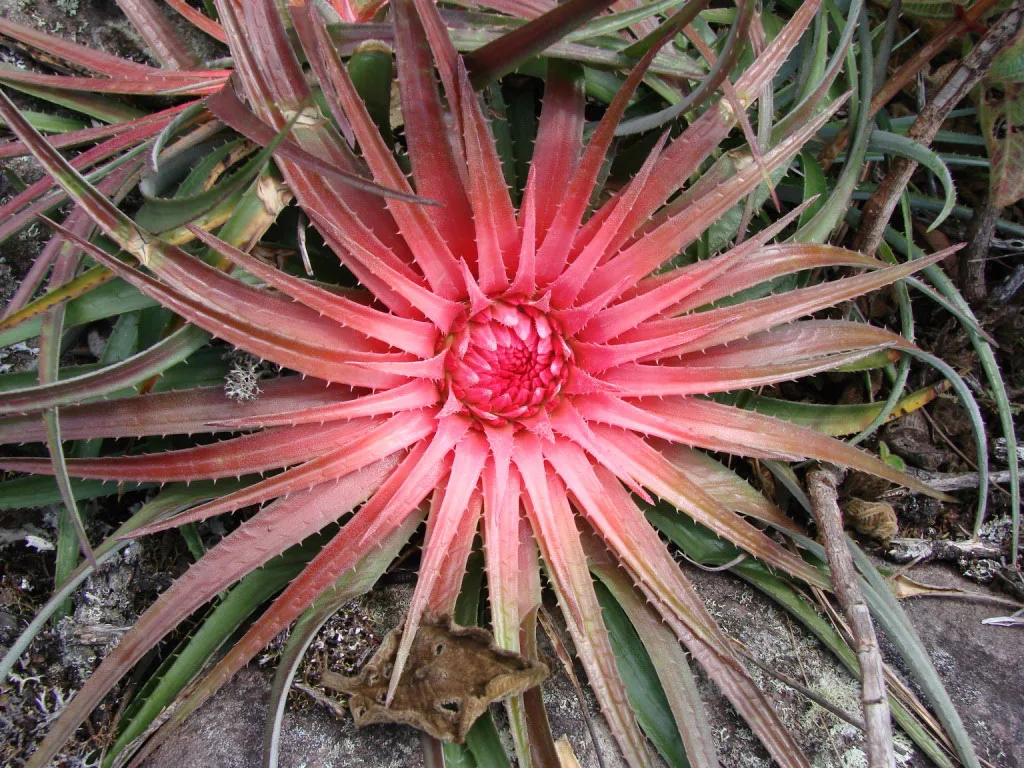
Hailing from eastern Brazil, the Orthophytum genus of bromeliads contains 67 accepted species.
Still pretty unknown, these unusual bromeliads grow in mountainous regions in Brazil on rock faces. Give these plants plenty of sunshine when growing indoors.
14. Pitcairnia
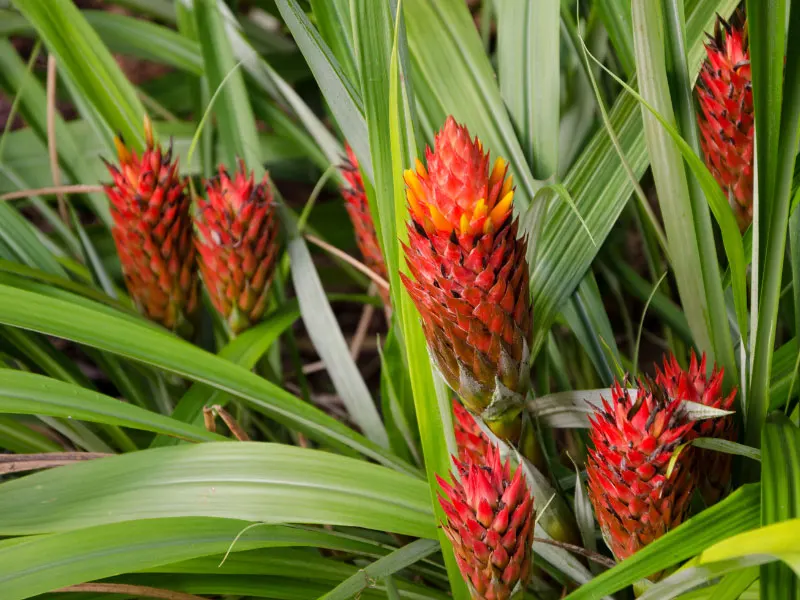
The Pitcairnia genus of bromeliads contains over 400 species. The natural habitat ranges from Guinea, Mexico, to Central and South America.
These plants are normally found growing as epiphytes in moist and shady locations. The foliage is mainly grassy. The tall inflorescence will produce flowers for months, but each flower only lasts a day or so. The flowers can be white, yellow, or red.
The Pitcairnia genus also contains the only species that grows outside of the Americas. The species Pitcairnia felciana grows on cliffs and rocks in French Guinea in Africa.
Indoors, keep these plants in brightly lit spaces, but not sitting in all day sun. Morning sun would be beneficial indoors.
15. Portea
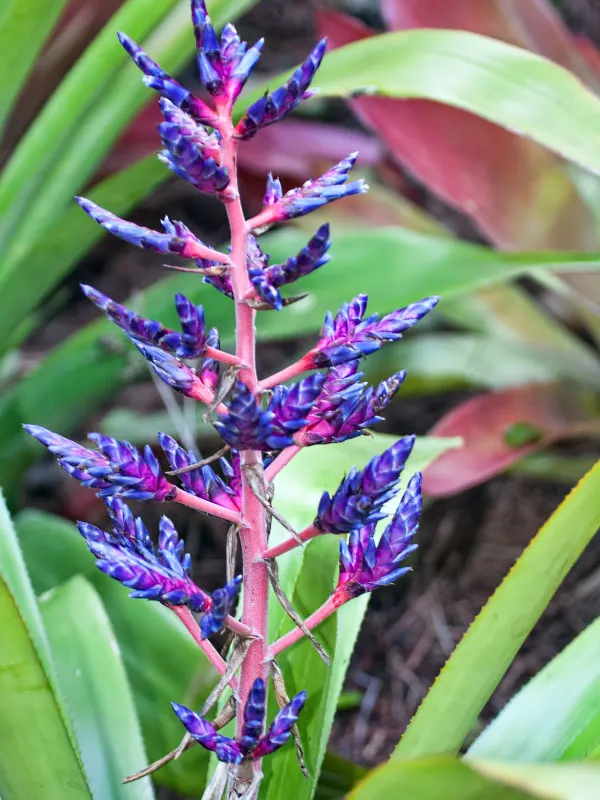
There are 8 accepted species in the Portea genus, all native to eastern Brazil. Most species are very large. The only one that may be more suitable to growing indoors in a pot is Portea kermesina. This one can grow 2-3 feet tall with a bright red inflorescence.
Portea species grow terrestrially and in full sun, along the coastal regions of Rio de Janeiro. The foliage has large spines.
16. Puya
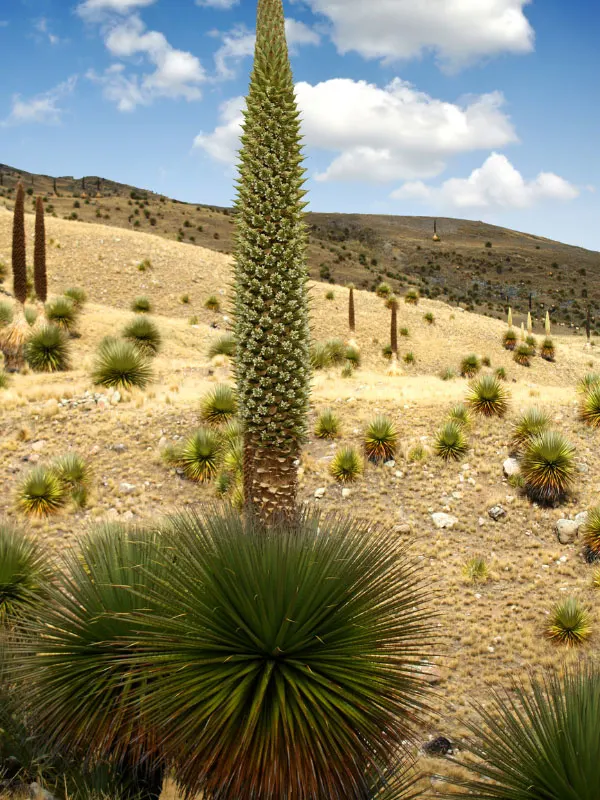
Puya is a large genus of bromeliad that contains 230 accepted species. The native range of the Puya genus is Costa Rica through much of tropical South America.
This genus also contains the world’s largest bromeliad species, Puya ramondii which can grow up to 30 feet tall and 9 feet across!
Found in high elevations in the Andes mountains in South America, some Puya species even grow in areas where temperatures drop below freezing.
There are only two species that are found in Costa Rica, and the rest are native to South America.
Puya bromeliads grow terrestrially in the ground and are not epiphytes. Many Puyas resemble yuccas or agaves in appearance.
They are very intriguing plants because some of them are considered protocarnivourous. This means that animals often become trapped in their spines and die. As they decompose, it provides nutrients for the plant.
Puya bromeliads need plenty of sun and water during the growing season, but need dry soil during periods of colder temperatures. This would make this a great plant to grow in cooler areas in the United States where it’s not warm enough to grow other bromeliads outdoors.
The sheer size of these plants makes it difficult to manage indoors, but they have the benefit of being able to be grown in areas that have temperatures that approach freezing. Here is a good link to Puya species and care.
17. Quesnelia
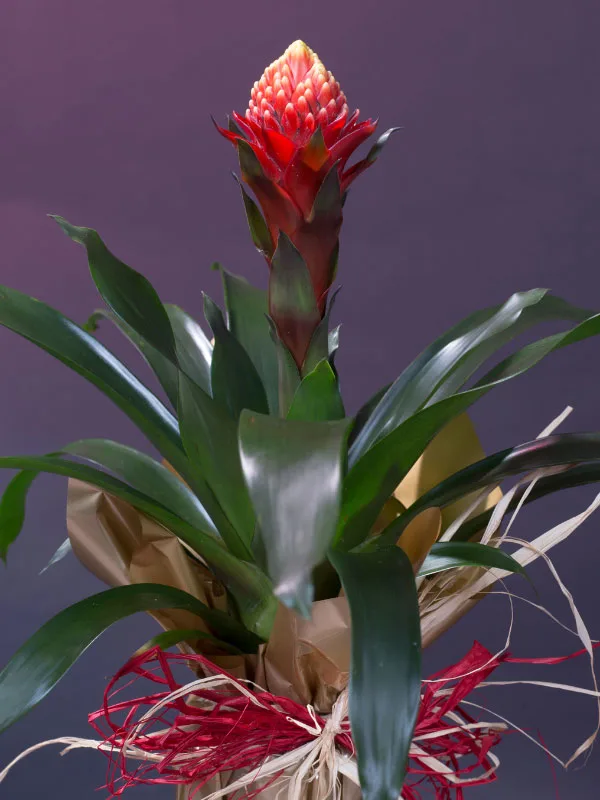
Native to eastern Brazil, the Quesnelia genus contains 24 accepted species and it grows in a seasonally dry tropical biome.
They resemble Billbergia bromeliads and form stiff rosettes. Many Quesnelia species are spiny though, so beware!
18. Tillandsia
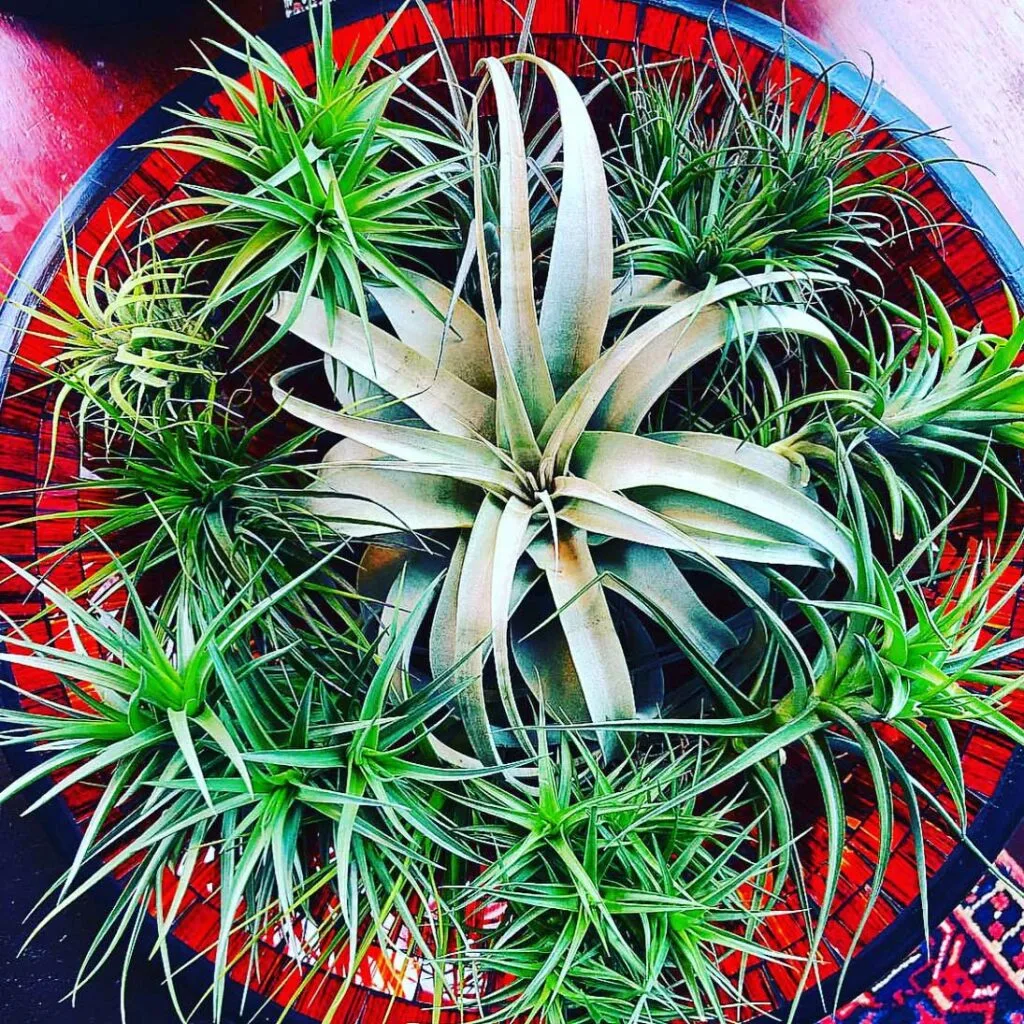
Some of the most easily recognized plants in the bromeliad plant family are Tillandsia, commonly known as air plants. Most Tillandsia plants are epiphytic plants and their native range is anywhere from the southern United States to Mexico, Central America, and much of South America.
This is a large genus and there are 649 accepted Tillandsia species. There are two main groups of Tillandsias: xeric and mesic types.
Xeric types have larger and denser trichomes, which are scale-like structures or hairs that absorb water and nutrients. Xeric types grow in dry, desert climates with very little water. As a result of the dense and numerous trichomes, they usually have a gray appearance.
Some good examples of xeric type air plants are Tillandsia xerographica and Tillandsia tectorum.
Mesic types come from areas with much more rainfall, and these have smaller and less dense trichomes, thus giving them a greener or grayish green appearance.
One Tillandsia that you may be very familiar with is Spanish Moss (Tillandsia usneoides). Spanish Moss is a commonly seen sight, often draping itself on tree branches.
Most species of bromeliads require frequent watering, and misting them once a week will not cut it. Check out my blog post on air plant care for more specific details.
Contrary to popular belief, they can not survive on just air, and actually need quite a bit of attention in the indoor environment, especially in dry air.
At a bare minimum, they need bright, indirect light but they will all benefit from windows with a few hours of sun indoors. More light also mean more frequent watering.
Like most bromeliad types, Tillandsias will slowly start a process of dying after they bloom, but not before they produce small plantlets, or pups, at their base. Over time, with good care, Tillandsias will form beautiful clumps of plants.
19. Vriesea
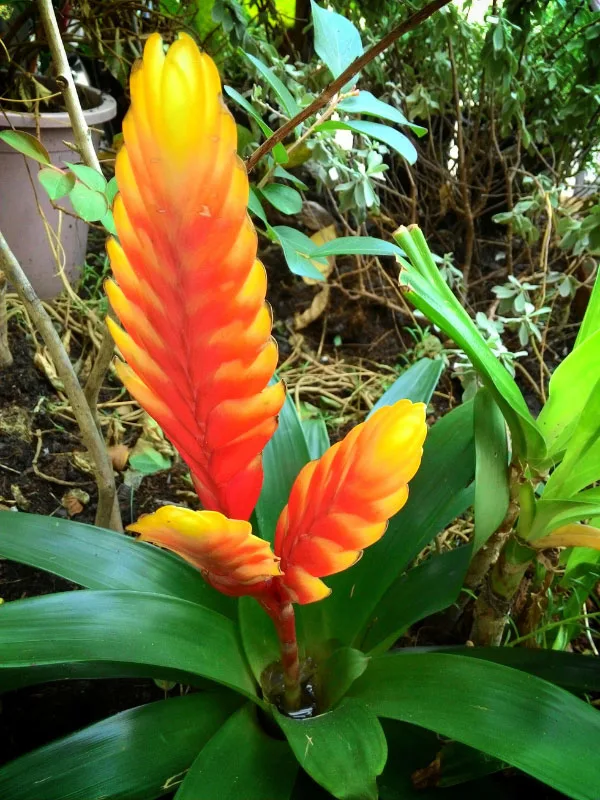
The Vriesea bromeliad is commonly known as Flaming Sword because of the brightly colored yellow and orange inflorescence. The inflorescence can last several months.
Vriesea species are native to Mexico and throughout tropical America. The genus contains 256 species. These are some of the most common bromeliads to find at nurseries and local shops.
BROMELIAD CARE
Here are some very general care tips for bromeliad varieties:
- Since bromeliads come from very diverse climates, get to know your genus and particular species so you can learn about the individual care of your plant. Many come from tropical areas with warm temperatures, but some even come from high-altitude areas with cold temperatures.
- Most bromeliads will start a slow process of dying after they bloom. It can often take months or longer, but they will produce pups to keep the plant going.
- Most bromeliad plants are epiphytic, and they mainly use their roots for support on tree branches. They are not parasites.
- As a result of being epiphytes, good air circulation is very important.
- If you have a tank bromeliad with a central cup that holds water, always keep that cup full. Periodically change the water out completely to keep it from stagnating. Distilled or rain water is best. Hard water will leave mineral deposits.
I hope you’ve enjoyed this post on types of bromeliads. Do you have any bromeliads? Comment below. I’d love to hear!

